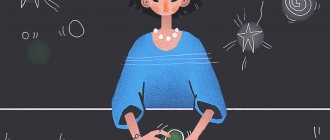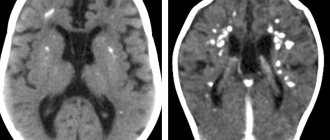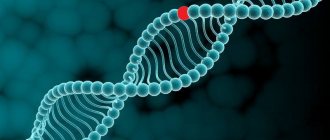Autism is a psychomotor development disorder characterized by impairments in social interaction, verbal and nonverbal communication, accompanied by restricted behavior and stereotypical actions. The first clinical signs begin to appear, as a rule, in the first two years of a child’s life, actively progress until the age of 12, then they are characterized by some regression - the patient seems to “outgrow” the disorder.
How does autism manifest?
As already noted, symptoms most often begin to appear in childhood. Parents, for their part, should devote more time to the baby and carefully monitor his behavior. In this article we will talk about the signs of autism in adult women and men:
- Senseless, erratic movements of the arms, head and other parts of the body.
- The patient makes up his own rules and strictly follows them. For example, he puts things in a strictly certain order.
- Increased irritability and manifestation of aggression to any changes in his usual environment. For example, rearranging furniture in a room.
- Strict adherence to certain regimes and routines.
- The patient often repeats actions and sees only one direction.
- Sometimes there is an excessively high level of activity, reaching the point of insanity; the patient can easily bite or hit himself.
Of course, such symptoms can also be observed in a completely healthy person. But here we are talking about pronounced, permanent signs. And this is the first alarm call.
When it comes to depression, we imagine a gloomy, apathetic person. His judgments are negative, his mood is decadent, his self-esteem is low, and his outlook on life is quite sad. Read more in the article: “hidden depression: symptoms.”
Experts are actively studying this problem and monitoring patients for a long time. Research has identified additional symptoms of autism in adults:
- almost all patients with pathology have a low level of intelligence;
- seizures of various types are observed in a quarter of patients;
- a person suffering from autism cannot concentrate for a long time, lack of perseverance;
- unjustified outbursts of anger usually arise as a result of an attempt to explain something or a misunderstanding of the interlocutor’s arguments;
- violation of the usual eating regimen, lack of appetite, requirement of the same diet, identical arrangement of plates and other utensils;
- sleep disorders, most often expressed in insomnia, that is, a person takes a long time to fall asleep, gets up in the middle of the night, wakes up too early, etc.
Autism in adults
Neurologist
Korolik M.V.
Autism is a disorder of the brain, the causes of which can be genetic, mechanical (brain damage) or other, and usually makes itself felt in early childhood.
However, it also happens that autism in adults develops in adulthood, and those around them do not have time to understand what is happening in time and provide the necessary help. Signs of the development of autism in adults are often confused with seasonal depression, simply a bad mood, due to external problems, and so on. Typically, adults develop atypical autism .
Signs of autism development in adults:
- The person withdraws into himself and stops talking openly with loved ones.
- The person begins to avoid communication, tries to walk past acquaintances without saying hello, and does not maintain general conversations.
- A person avoids eye-to-eye contact, his facial expressions become poorer, as if “numb.”
- A person becomes passive or, on the contrary, too irritable.
- A person abandons his hobbies, his interest in life decreases.
- A person ignores events and changes in his own life and in the lives of loved ones.
- A person’s sense of duty disappears, he becomes forgetful and absent-minded. Moreover, he does not feel guilty for unfulfilled promises.
- The person loses the sense of real time.
- A person ceases to strive to spend time together with loved ones, to spend free time in places with large crowds of people.
- A person begins to be characterized by stereotypical movements, repetition of phrases, often borrowed from films, songs, maybe the media.
- A person begins to avoid verbal communication in every possible way, to be afraid of it.
Even one or more of the above symptoms may indicate that an adult has developed autism or autism spectrum disorder. Such a person needs urgent help from a psychiatrist and neurologist.
Autism in adults interferes with a full social life, forces a person to avoid any contacts, and even if such a person does not have a deviation in mental abilities, nevertheless, it is very difficult for him to lead an independent life.
Such simple and understandable things for everyone as looking for a job, going shopping, making acquaintance with an attractive member of the opposite sex, and so on, can become a serious test and even real torture for an autistic person.
Autism in adults , as well as autism spectrum disorders, is more common than one might think. According to data obtained by British scientists during large-scale studies, every hundredth adult suffers from autism.
Autism in adults is more common in men than women. Often the intelligence of autistic adults is very high, they achieve great success in their careers, make scientific discoveries, and so on, but problems in communication remain.
Also, the above-mentioned and other studies show that with autism in adults, only about 33% are able to fully or partially manage without assistance in everyday life, live and work independently. Severe forms of autism in adults lead to the fact that a person ceases to speak. Such people are at a low intellectual level.
an idea about autism in adults after watching the movie “Rain Man,” in which Dustin Hoffman played the main role. This film in 1989 was recognized as the best film of the year and received the highest award, and Dustin Hoffman himself was awarded an Oscar in the Best Actor nomination for his role as an adult man suffering from autism .
Classification of autism in adults:
According to the psychological classification of autism in adults , they are divided into five groups
- The first group is patients who do not interact with the outside world. They are practically incurable.
- The second group is people who are closed in on themselves, showing a desire to communicate solely on their own initiative. They can spend hours doing what they love and not feel the desire to eat, sleep or rest.
- The third group is people who do not accept the views and norms of society.
- The fourth group is dependent adults with autism , who tend to be offended and unable to confront problems. It is difficult to distinguish such people from healthy people. Only a psychiatrist can do this.
- The fifth group includes adults suffering from autism with an above average level of intelligence. Such people become talented mathematicians, programmers, and writers. In the United States, it was found that due to genetic disorders, autistic people develop so-called “genius genes.”
Unfortunately, society does not always accept adults with autism . They are often called “eccentrics”, shunned, and in the worst case, they laugh at them and humiliate sick people. Often, adults who have developed autism are turned away by their relatives and friends, and loneliness in adults with autism only aggravates the patient’s condition.
There are some celebrities among adults with autism For example, Woody Allen has signs of autism , and the famous artist Vincent van Gogh also had them.
Autism cannot be cured completely, but the condition an adult with autism . To do this, he needs to learn the rules of behavior, some actions, and learn to be independent - all this is important for the survival of an adult suffering from autism . The main thing is to start correcting behavior quickly, then the process will be easier and results will be achieved faster.
Features of the manifestation of autism in adults
Autism is one of the mental illnesses that occurs as a result of disturbances in the functioning of the brain. Often the nature of such disorders determines the long course of this disease. For this reason, autism, the first signs of which are noticeable already in childhood, lasts throughout life and patients have to put up with autistic disorders not only in childhood, but also in adulthood. An autistic adult experiences the same difficulties in interacting with others, lack of emotions, patterned thinking, narrow interests and other primary and secondary symptoms.
In adults, as well as in children, there are various forms of autism, grouped under the general group of autism spectrum disorders. The degree of complexity of the disease depends on its symptoms, the nature of therapy and the degree of socialization of the autistic adult. The defining signs of autism are the so-called triad:
- problems with social interaction
- impaired communication skills
- a narrow range of personal interests and ritualistic behavior.
A characteristic feature of an autistic adult that sets him apart from others is isolation. Regardless of the form of the disease, an adult with behavior disorder on the autism spectrum has great difficulty establishing social contacts and remains aloof from society throughout his life. Primary autism must be distinguished from secondary, or “involuntarily” autism. Often people with pathologies of the speech or hearing system, congenital dementia and other ailments find themselves rejected by society. They withdraw into themselves, finding themselves outside of society. The fundamental difference between “involuntary autists” is that they experience acute discomfort due to their conflict with others; congenital autists are not interested in contact with others. These people, by their nature, cannot integrate into society; ordinary communication is an irritant for them.
Another characteristic symptom of autism is impaired communication skills , which is a consequence of withdrawn behavior. Typically, autistic children begin to speak later than their peers. The reason for this is not so much physical deviations as the lack of the very motive for communication. Such a child simply does not want to talk. Over time, most people acquire “unnecessary” speech skills. However, this situation leaves its mark in adult life. The speech of an adult autistic person differs from the speech of healthy people in its scarcity and underdevelopment.
The third most important symptom is the constancy of the autistic’s inner world. Autistic adults experience a strong need for consistency , in some cases this can resemble ritualism. This can manifest itself in strict adherence to the established daily routine, gastronomic habits, and systematization of personal belongings. Any violation of the usual way of life causes anxiety, attacks of panic or aggression.
In general, the character of an autistic adult can be described as withdrawn, isolated, and replete with persistence . Due to the inadmissibility of any changes in the existing way of life, autistic people have a very narrow circle of their own interests. Methodical repetition of the same thing often allows them to bring their favorite skill to perfection. This leads to the prevailing opinion that autism is characteristic of geniuses. In fact, autistic people rarely make real geniuses. Moreover, very often autism is accompanied by mental retardation and behavioral abnormalities. In this case, the leading skill of an autistic adult will not be a masterly game of chess, but assembling a pyramid from children's cubes.
Autism itself is a general concept. In modern medicine, general autism is divided into several areas:
- autism itself ( Kanner syndrome )
- Asperger's syndrome (mild form of autism)
- Rett syndrome (female psychoneurological disease)
- atypical (combined) autism
The most complex form of autism is Kanner syndrome , or autism itself. People with Kanner syndrome experience the full spectrum of autism symptoms. Such a person is absolutely asocial, speech skills are weak or completely absent due to atrophy of the speech apparatus. The most important nervous structures are not developed, intelligence is at the level of moderate or severe mental retardation. An independent life for such a person is impossible. A person with Kanner syndrome must be under constant supervision; in especially severe cases, isolation in a specialized medical facility is required.
The syndrome, described by the eminent psychiatrist Hans Asperger , is a milder form of the disease. Despite significant problems in communication and socialization, such people are fluent in speech and cognitive abilities. They can be withdrawn, strange, somewhat clumsy, but quite independent. People with Asperger's syndrome often work and become productive members of society.
Rett syndrome is a chronic disease transmitted only through the female line. The disease manifests itself no earlier than 1 year, after which the patient begins to rapidly regress. Therapy helps to slightly improve the overall picture. There are few adult women suffering from Rett syndrome. The disease usually ends in death before age 25–30.
When it is impossible to identify a specific form of autism, they speak of atypical autism, which is a combined set of different symptoms.
Of all the listed forms of autism, Asperger's syndrome and atypical autism are the most common.
Despite the fact that autism has been studied in detail since the first decades of the twentieth century, its causes have not yet been unraveled. Today, the theory of gene mutation is considered one of the main ones. Scientists have been able to identify some genes that influence the development of autism, but have not been able to figure out how and why the mutation occurs.
Treatment for autism should begin at an early age, as soon as the disorder is diagnosed. In this case, treatment is reduced to rehabilitation measures. Only in this case does the little autistic person have a chance to grow into a more or less independent adult. Therapy (behavioral, speech therapy) plays a primary role. Regular visits to a psychotherapist are also recommended for autistic adults who have managed to adapt to society. Patients are often prescribed medications (psychotropic and anticonvulsants). These can be antidepressants, antipsychotics, various stimulants. They help stabilize the patient’s condition and alleviate symptoms, but they do not eradicate the psychological disorder itself, and it accompanies the autistic person throughout his life.
PREVENTION OF AUTISM
There are no strictly defined rules for the prevention of autism, but there are some recommendations from experts, using which parents can avoid the development of this disease in their child. Pregnant women and nursing mothers need to be very strict about their diet and try to avoid foods that contain GMOs. This also applies to artificial milk formulas.
Some children's bodies cannot process gluten, as it can cause depression. And products with such a component are contraindicated for a child with autism.
It is also worth paying close attention to the vaccinations given to your child, since modern vaccinations contain heavy metal compounds as a preservative. Children's bodies sometimes cannot cope with the vaccine, and mercury poisoning can occur. Signs of poisoning are similar to the main manifestations of autism in a child.
Autism syndromes and their features
Autism is a general name for several syndromes that are characterized by common features, but also have their own characteristics and characteristic behavioral patterns.
Advertising:
Kanner syndrome
The disease is characterized by obvious lesions of the cerebral cortex, due to which the patient has serious problems with communication, there are speech defects, aggressive behavior is noted, intellectual data is poorly expressed, and it is almost impossible to find a common language with the person. Able to exist normally only in one familiar environment. No more than two out of ten thousand people suffer from this syndrome; it can be diagnosed in childhood.
Pathologies of the respiratory tract that provoke aphonia (lack of voice) are a common reaction to infections, poor environment, stress and other factors. Read more in the article: “my voice is gone, my throat does not hurt and there is no fever.”
Asperger's syndrome
Asperger's syndrome - as a form of autism, expressed in a pronounced deficit in social interaction and communication, is characterized by limited interests and the same type of actions. Asperger's syndrome is often diagnosed in children of primary school age. As a form of autism, Asperger's syndrome is a dysfunction that affects a person's perception of the world, processing information and relationships with other people.
Rett syndrome
Advertising:
Rett syndrome is a congenital brain pathology characterized by defective mental development with intellectual impairment and leading to social maladjustment. This neuropsychiatric genetic disease is caused by gene mutation. It is manifested by progressive mental retardation mainly in girls, muscle hypotonicity, unsteadiness of gait, scoliosis, constipation, loss of acquired skills, respiratory disorders, paresis and paralysis. The mechanism of inheritance of Rett syndrome is dominant, linked to the X chromosome. The syndrome is extremely rare in boys. For them it is incompatible with life.
Video - Autism in adults: symptoms, causes, forms, diagnosis, treatment
Reviews about ADOS autism diagnostics
The table shows reviews from users of forums and websites about the ADOS autism diagnostic system.
| Positive | Negative |
| How stressful is this test for the baby, and will there be any behavioral complications after it? We haven’t been apart from the baby for a minute since birth and it’s already been four years... (Natasha) | Unfortunately, the test did not help us determine an accurate diagnosis. Because according to the results, we get a weak form of autism, and according to the results of numerous other studies and work with a geneticist, we get a severe form. So, as the article says correctly, the test cannot accurately diagnose – it’s just a guess! (Svetlana) |
| The test is carried out in a playful way, the child is comfortable, he does not even notice how the parents disappear from the room. Our baby played with the examiner for almost two hours, after which we were provided with a video, a description, and a preliminary diagnosis, which only confirmed the assumption of our psychiatrist and neurologist. (Tamara) | We have twins, and each has been diagnosed with ASD, just in different forms, as they say, “lucky” is “lucky”! We were never able to pass the test, they are inseparable, and all tasks must be completed individually, and the reaction to the doctor himself was immediately negative. After twenty minutes of hysterics, we put the kids in the car and brought them home. She barely calmed me down. Well, how can we diagnose something here? (Nelya) |
| We also recently passed testing. Our daughter was involved in the game, but the psychologist made notes and notes in her notebook, after which she announced her diagnosis, now we are waiting for a detailed transcript. (Julia) | It is difficult for children with severe forms of autism to pass this test, since they need to contact an outside adult, plus without the presence of their parents. I don’t risk injuring my son, there are more humane checks! (Margarita) |
| We have already completed three modules, in different age categories, and all the time the result is the same - autism (((But the child was comfortable, no hysterics, tears or aggression, quite the opposite. I rarely see my daughter smiling, but here she was beaming)) ) (Lina) | We couldn't pass a single module! I didn’t make contact! (Tasya) |
| I tested it myself at home, purchased the ADOS course, and made appropriate entries in my diary during the period of completing game tasks without causing any injuries to the child. She handed over all the records to our psychiatrist, who analyzed, deciphered, and made a diagnosis. (Sonya) | Diagnostic technology takes place, then only as one of. Since diagnosing autism just because the child did not want to answer questions or look at pictures is stupid. Moreover, not all children make contact with strangers! (Yuri) |
| It is important to find a competent psychologist, and testing will demonstrate good results. We went through five clinics until we found a SPECIALIST! (Anna) | I didn’t see anything supernatural in the process, I watched the video, and there the child behaved exactly the same as at home (lives in his own world). The psychologist was unable to provoke contact! (Pauline) |
| Comfortable environment, friendly examiner, the child calmly withstood the entire testing period (2 modules were completed). I'm happy with the result. (Valentina) | |
| The daughter was immediately capricious, but the psychiatrist found methods to calm her down and agree to complete tasks without my husband and I being present. I was pleasantly surprised. What can I say, specialist! The diagnostic result coincided with the preliminary diagnosis. (Vita) | |
| I couldn't pass the test the first time. We were advised to go through everything at home. Yes, I had to pay more for a home visit. But it was worth it, since no one pulled my son out of his comfort zone. I don’t see any disadvantages in this type of diagnosis. Yes, this is not a panacea, but it’s worth going through! (Darina) |
After analyzing reviews from various Internet sites, we can conclude that the majority of parents have a positive attitude towards ADOS. They perceive the test as just another diagnostic and ability to test the intellectual and communication skills of their children.
Conclusion Autism is a neurological disorder characterized by social difficulties and inappropriate behavior. The ADOS autism diagnosis allows you to determine the form and degree of behavioral and neurological abnormalities in order to select treatment and individual sessions. Remember, test results cannot make an accurate diagnosis. This is an assumption that should motivate parents to take further action.
Frequency of symptoms of autism
| Sign | Frequency of occurrence |
| Desire for isolation | Often |
| Difficulties in communication | Often |
| The desire to do one thing | Rarely |
| Retardation of activity | Often |
| Hearing impairment | Rarely |
| External defects | Often |
| Aggression | Rarely |
| Difficulty understanding information | Often |
| Emotional disruptions | Often |
| The difficulty of understanding another person's emotions | Often |
This table was compiled using only 100 patients, so results may vary slightly in a larger study.
The number of teenagers with ASD has increased sharply: how to help them
American doctors noted a sharp increase in autism in 1990. If previously, such a diagnosis was considered a rarity, then over the past decades the picture has changed a lot. Nowadays, parents are much more informed about helping their children. Thus, Chantal Saysil-Kira, the mother of an autistic person, has written a number of books, the main theme of which is helping teenagers with ASD. In her opinion, parents can sometimes find a diagnosis where there is none.
For example, if your child has become poorly managed, then this may only be a manifestation of the transition period. If the diagnosis is confirmed, then, as the author of the book “Teenagers on the Autism Spectrum” says, the child needs to be made to feel truly independent.
You can create a daily routine for him, indicating the tasks that he will need to complete. Then place this list in a prominent place. This will allow the teenager to make independent decisions, without constant reminders from parents about important matters. If suddenly something goes wrong, he will bear responsibility for his decisions independently, which will help him develop an understanding of cause-and-effect relationships.
There is no need to try to correct your child. It is necessary to help him get along with himself, make contact more easily and learn to manage his life. Then, as an adult, he will successfully manage his own finances, build healthy relationships and lead a fulfilling life.
Examples of autism tests for adults
Advertising:
The tests are used only during the initial screening of an adult patient to determine the need for further evaluation. The most popular and most frequently used diagnostics will be discussed below.
AspieQuiz
The technique consists of 150 questions that affect personal, professional and social areas of life. Examples of questions are: is it difficult for a person to be around strangers, do you have problems with asexuality, how passionate are you about your business, and so on. After answering all the questions, testing will assess your intellectual, social characteristics and ability to accept incoming information.
RAADS-R testing
This testing can only be completed in a specialist’s office, since the online tests offered cannot give an accurate result. The peculiarity of this test is that it absolutely does not give false positive results, since during the examination behavioral characteristics are taken into account not only at the present moment, but also up to 16 years of age. In psychology, this age is critical and marks a kind of transition from puberty to adulthood.
TAS20
This test is designed to test the sick person’s ability to perceive the emotions of the interlocutor. According to previous studies, only 20% of people with autism can understand another speaker. Moreover, this recognition may be somewhat inhibited. The test consists of three scales: how well a person recognizes the emotions shown to him, how well he can describe them, as well as features of externally oriented thinking.
Which test to take for a particular patient is determined by the attending physician. You are only allowed to take the ASPIE on your own on the Internet, but with its results it is still better to contact a psychologist or psychotherapist.
What to expect after allowing your child to be screened?
The ADOS Autism Test consists of four different modules. Each is designed to provide the most appropriate test for an individual based on age or functional level.
Module one is intended for people who do not have consistent verbal communication skills. Uses entirely nonverbal scripts for scoring. Module two is intended for people with minimal verbal communication skills. This may include younger children at age appropriate levels; most scenarios require moving around the room and interacting with objects. Module Three – Designed for people who can speak and are able to play with age-appropriate toys. Can be carried out mainly at a desk or table. Module four is intended for people who can speak fluently, but cannot play games with toys. Includes some elements of Module 3, but also more conversational aspects relating to everyday life experiences.
Each module consists of a set of standardized scenarios through which the test taker goes through the topic. For example, a child is given the task of placing a set of pictures in a clear sequence. The role of the psychiatrist is to monitor the progress of work and evaluate methods of overcoming problems: asking for help, screaming, hysterics, refusing to take a test. Each response is an evaluative behavior for the examiner.
Other components include structured conversations or social scenarios such as mock birthday or snack time. Many of them deliberately introduce minor obstacles. For example, holding blocks to see how the child handles them. The examiner will use a hierarchy of structures called presses to answer questions. In general, the child is expected to take initiative in the early parts of the test without asking for help. If this does not happen, the examiner will propose increasingly specific tasks to obtain the necessary behavioral information for assessment.
Parents will naturally be eager to help their child complete all the steps, but the purpose of the test is to see how the child copes independently. Many examiners strongly discourage parents from being in the room while their child is being tested. Each module takes about 40 minutes, but because they target different types of subjects with different behavioral and cognitive problems, not all are necessarily used. The examiner may select a different module after finding that the one initially selected did not meet the child's functional abilities.
Treatment of autism
The disease cannot be ignored, as it can progress and can lead to complete isolation and severe aggression of the patient. First, you need to choose an individual approach to the patient, becoming a good friend for him. After this, through conversations and activities to develop fine motor skills, intellectual stimulation, with the help of even the most ordinary mosaics and pictures, the IQ level will gradually increase.
Advertising:
If treatment is successful, the patient will begin to make contact with other people and try to perceive incoming information. If this does not help or does not bring the desired result, medications are prescribed. If severe anxiety and panic attacks occur, the patient will be prescribed antidepressants.
If a patient exhibits severe aggression, he should take antipsychotics, which can suppress irritation by blocking the activity of nerve endings. But it is worth understanding that because of this, the patient can become very slow and poorly perceive incoming information. In this case, analeptics will be prescribed that will increase attentiveness and the ability to think.
Description of the pathology
Mental disorders occur differently in different people. However, people with Asperger's syndrome share a number of common characteristics. This concerns interaction with society, behavior, thinking with a special cognitive style, perception of the world, the functioning of the senses, etc. How pronounced the symptoms will be depends on the individual characteristics of the person. But neither age, nor gender, nor belonging to a particular race has an impact on the process of pathology formation.
So, a person with Asperger's syndrome can be recognized by the following signs:
- Difficulties in building a system of interaction with society. People with this form of ASD show varying degrees of interest in social interaction. The vast majority strive to reduce contact with society to a minimum. To some extent, this can be explained by society’s misunderstanding and rejection of people with similar problems. Negative life experiences and the need to make enormous efforts to maintain relationships lead to the fact that people with this disorder often lead a secluded lifestyle. Although among them there are those who want to interact with other people, despite difficulties and failures. The syndrome leads to the fact that a person is unable to understand allegorical speech, jokes, and ambiguous statements. He does not understand sign language, he does not perceive differences in the tone of voice, and cannot distinguish emotions from facial expressions. The experiences of other people and their feelings are inaccessible to a person with this type of ASD. He builds interactions with others on his own terms, and nothing more. Rejection of these rules leads to complete detachment and refusal to interact with society.
- Narrow interests, fixation on one type of activity. Autism spectrum disorders are characterized by the need to have a clear routine, work schedule, detailed plan and specific instructions. In order to somehow organize the surrounding space, people with Asperger's syndrome become deeply immersed in certain activities. As a result, they receive peace and satisfaction, and also get rid of background anxiety. If interests have applied value, then they can subsequently become part of professional activity. The duration of fixation on one type of activity can be different, it ranges from several days to years.
- Features of speech development. Many diagnostic methods contain instructions that the syndrome should be excluded if the patient does not have clinically significant delays in speech development. However, with this syndrome there are still some speech features. Such people use it only as a tool for exchanging information, and not for building relationships with others. That is, the conversation has no emotional overtones, there is no humor in the speech, etc. A person with pathology will interpret the words of his interlocutor in a literal sense, so the general meaning of the statement may be distorted or not understood at all. Figurative speech and metaphors are perceived only when reading works of fiction, but in conversation this will cause great difficulties.
- Sensory perception. People with ASD process incoming and outgoing sensory information differently than others. Asperger syndrome involves either low or high sensitivity in one or more senses. For example, when talking with several interlocutors, so-called audio confusion may occur. A person may also be unable to distinguish certain patterns, smells, textures, and textures of food.
- Motor function disorder. The syndrome is often accompanied by some clumsiness. The individual may have difficulty fastening buttons, going up and down stairs, spatial orientation, etc. But this symptom is not the main one when making a diagnosis, since not all patients have problems with movement.
- Thinking. Such people are distinguished by a special type of cognitive activity. In the specialized literature they often write that such people have a special cognitive style of thinking. Attention is usually focused not on the main thing, but on details or unimportant stimuli. More preference is given to abstract things rather than precise technical information.
A person with a combination of all these signs experiences great difficulties when communicating with people around him. But the presence of this pathology is not a death sentence. Life with Asperger syndrome can be quite normal; such people can successfully lead social activities, work, and have families. Experienced psychotherapists provide assistance in socialization.
There are psychotherapy methods that can improve the quality of life of people with autism spectrum disorders. But this is only possible by contacting specialists and making an appropriate diagnosis.
How adapted is an autistic person to life?
The disease cannot be ignored, as it can progress and can lead to complete isolation and severe aggression of the patient. First, you need to choose an individual approach to the patient, becoming a good friend for him. After this, through conversations and activities to develop fine motor skills, intellectual stimulation, with the help of even the most ordinary mosaics and pictures, the IQ level will gradually increase.
If treatment is successful, the patient will begin to make contact with other people and try to perceive incoming information. If this does not help or does not bring the desired result, medications are prescribed. If severe anxiety and panic attacks occur, the patient will be prescribed antidepressants.
No matter how strange it may seem, autistic people quite often achieve success in the fields of mathematics and physics. They can ponder over some formula for quite a long time; thanks to their perseverance, they observe rare processes that subsequently lead to discoveries and breakthroughs in science. In addition, people with a mild form of the syndrome can become talented musicians, scientists, directors, models and actors. Bob Dylan, Isaac Newton and even the twentieth US President James Garfield are all examples of autism, which did not prevent it from becoming a legend and history.
Advertising:
If studies have shown that you suffer from autism, or your loved one is faced with this problem, you should not immediately think that life ends there. In conditions of normal social communication, in which there are understanding people and friends who are close in spirit to the sick person, a patient with a similar diagnosis can fully realize himself in the professional and personal sphere.









